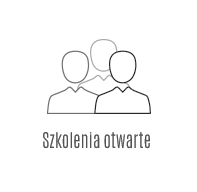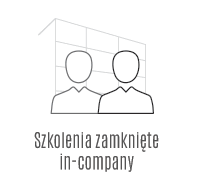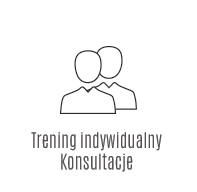Szkolenie (stacjonarne / online) Recruitment and selection behavioral interviewing advanced tools PREMIUM
How to hire the best candidates?
Korzyści ze szkolenia
Training participant:
- will learn to professionally plan the recruitment and selection process;
- will learn how to create job descriptions, candidate profiles and recruitment advertisements;
- will learn to prepare and conduct an effective job interview;
- will acquire the ability to construct behavioral questions examining specific competencies;
- will learn how to use modern selection techniques;
- will significantly increase the accuracy of recruitment and selection decisions;
- learn about the latest trends in recruitment.
Program szkolenia Recruitment and selection behavioral interviewing advanced tools PREMIUM
Latest trends in recruitment and selection - Polish and international practices:
recruitment yesterday and today - specific conditions of modern recruitment;
modern tools in the form of tests, job samples, simple online recruitment games - market overview;
ads are going away - time for recruitment viral, scouting and inbound marketing;
building candidate engagement in the online recruitment process.
Selecting candidate sourcing:
“fishing for people” in search of candidates for ‘difficult’ positions (e.g., people with authorization to operate various equipment, IT specialists, specialists in narrow fields, etc.);
social media, industry portals, local sources for sourcing candidates from home and abroad;
who we recruit - recommendations for recruiting and selecting employees of the BB, X, Y and Z generations;
the cross-cultural aspect of recruitment and neurodiversity - answers to dilemmas.
Development of step-by-step recruitment and selection tools:
can we examine everything? - Principles of criteria selection for accurate candidate selection;
the most accurate selection methods a guarantee of success in the recruiter's work;
selection of the type of questions and simulations based on the candidate's profile - selection matrix and triangulation of methods;
the optimal recruitment funnel - relevance and economy for different recruitment processes.
Preselection of candidates - saving time and money:
McCllelland's theory in the competency perspective - excellent support in the analysis of application documents;
competency information obtained through the various assessment methods (resume and cover letter analysis, interview, simulations, references, tests and surveys);
telerecruitment - the most important guidelines in the process of contacting and interviewing candidates online;
what is a short-list and what criteria should it meet?
operating the language of business when recommending candidates to decision-makers.
Optimal pattern of the recruitment interview - the new standard:
“Human first”. - minimizing isolation and building the right atmosphere;
presenting the company, team and position as part of building a positive candidate experience (CEx) and communicating company values;
weak and strong interview questions - how to save time and increase relevance;
let the candidate shine - the structure of the behavioral interview in the STAR model;
strong questions about motivation and priorities - skillful exploration of candidate attitudes;
properly closing the interview and answering difficult questions from candidates.
Behavioral interviewing - STAR-based competency testing in practice:
critical events method as a foundation for applying the STAR technique;
construction of a question referring episodically to the beginning of STAR;
training in the ability to ask questions using the STAR technique with in-depth questions;
how to diagnose development potential at different stages of the process?
the art of deepening statements and diagnosing true competencies;
inferring competencies based on candidates' answers;
training in defense against communication tricks used by candidates.
Legal aspects of the recruitment process:
truths and myths - “what am I allowed, what am I not allowed?”- legal requirements and formal regulations on the recruitment process;
discrimination and the Labor Law Code. Consequences of improper process;
why is it forbidden to ask about the reasons for parting with a previous employer? - These and other surprising illegal and borderline questions.
Building a positive Candidate Experience and feedback:
providing “YES” and “NO” feedback;
“the black well of silence” and employer image. The role and function of candidate feedback;
written and telephone forms of negative feedback, examples, analysis;
e-recruitment thank-you notes as a form of building relationships with candidates in the labor market.
The classes are conducted in the form of skills training. We propose engaging forms of conducting classes for participants:
work based on examples of proven solutions from the market, taking into account the size of the company and the specifics of the industry;
simulations to practice the learned tools and techniques;
case studies to analyze and solve difficult situations;
mini lectures to impart theoretical knowledge of the issues discussed; supplement and organize the knowledge possessed;
discussions to exchange experiences and solve specific dilemmas at work.
Metody szkoleniowe
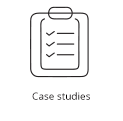
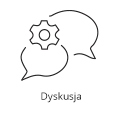
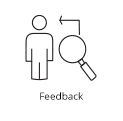
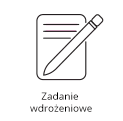
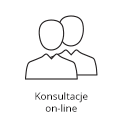
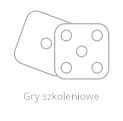





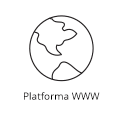
Szkolenie stacjonarne
- 2 dni szkolenia (16 godzin )
- skrypt szkoleniowy
- materiały dodatkowe
- certyfikat
- monitorowanie zadań wdrożeniowych
- 60 dniowy e-mentoring
- lunch (restauracja)
- serwis kawowy premium
Cena:
2990 zł
+ VAT
Szkolenie online zawiera
- 1.75 dni szkolenia (14 godzin )
- skrypt szkoleniowy
- materiały dodatkowe
- certyfikat (pdf)
- monitorowanie zadań wdrożeniowych
- 60 dniowy e-mentoring
Cena:
2690 zł
+ VAT
Rabaty:
- drugi uczestnik - 10%, trzeci uczestnik - 15%
- więcej - porozmawiajmy
Hotele
blisko nas
 ON-LINE
ON-LINE

 Pobierz formularz
Pobierz formularz

